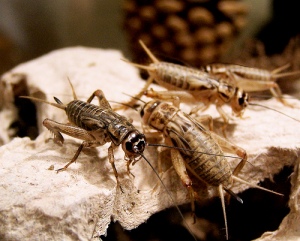It’s on its way…
It’s coming…

Ned Stark would have told daddy that he saw mommy kissing Santa Claus because it was the honorable thing to do.
Christmas is one week away.
I made that.
I have no tie in at all.
[crickets]
Today we’re going to talk about a (more or less) Norwegian American comfort food called lefse (or levse or lasfa). It’s kind of like a potato crêpe. There have been claims that lefse was what sustained the Vikings on their long sea journeys, however lefse is actually a fairly new food since potatoes were introduced to Norway about 250 years ago. Its predecessor was a type of flatbread that was possibly eaten by the Vikings.
In the Viking era, little wheat was cultivated in Scandinavian countries. The terrain was harsh and rocky, not to mention there was no access to the necessary equipment to grind up grain. Whatever wheat was available was imported and costly so bread was only eaten by the wealthy or was kept for church rituals as holy bread.
The first Norwegian breads were made the same way as most early breads; they were flat cakes of dough made from flour or crushed grains and kneaded with water or another liquid. The cakes of dough were placed directly in the ashes, on embers, or on a flat stone by the fire to bake.
The bread of the less wealthy was proportionately less glamorous. It was made mostly from oats and barley and was unleavened since it didn’t have the necessary gluten to make bread rise. The poverty stricken made “bread” with whatever ingredients they could find, which was most often husks, dried bark, and reindeer moss.
Rye was cultivated around the 16th century, which paved the way for new baking techniques that focused on leavening and ovens. The first ovens were made of brick, but solid stone ovens were built into the walls of castles and manor houses. Once there were ovens, bread was baked on flat stones, griddles, or in small frying pans. Norwegians were also introduced to millstones worked by stream water, so more grain could be ground in a shorter amount of time. The most common grains used were barley and oats in the north, rye in the south, and wheat, still for the wealthy.
Streams followed most freely in the spring and autumn, so they were the season for making bread. Bread couldn’t be kept for more than a few days, which was probably why people began making thin breads that could be dried and stored for long periods of time. They were called lefse. All the women in a village would get together and make hundreds of lefse that would last their families all year. They made a specific type called hardanger, named after the Hardanger region, which could be dried and stored in barrels. The barrels of lefse would be placed in the stabbur or wooden storehouse (bryggehause) for storage. When it came time to eat the lefse they had to be moistened and warmed to be edible.
All through the Middle Ages different types of flour and liquids were used to make lefse. Potatoes were brought to Norway in the mid-1700s but it wasn’t until the 19th century that potatoes became the preferred ingredient. There was no way to properly store leftover potatoes, and lefse was the perfect preservation method.
The lefse were an important part of the Norwegian diet. When a harvest went bad and there was a food shortage, there was at least some lefse left. That, plus stored lutefisk were sometimes the only thing that kept people alive in harsh times.
Up until the 20th century, Norwegians made their own lefse, but today small village bakeries make and deliver the crisp lefse in cartons or soft lefse in plastic bags to save people a little time. Those who still produce their own follow family recipes that vary from place to place. Making the lefse is less about following a recipe and more about how it feels. Still, lefse has fallen by the wayside in Norway and only similar breads remain. The most well known are lompe, which is wrapped around hot dogs in eastern Norway. In the west they have potetkake, also called potetlomper, which is similar is as similar to the potato lefse as possible, without actually being lefse.
It may have fallen out of favor in Norway, but in America it’s a completely different story. Between 1820 and 1875, about 855,000 Norwegians immigrated to America to escape poverty and a rigid feudal system. That rocky, infertile terrain made it nearly impossible to plow or farm because of boulders and rocks in the soil. Norwegians were also subject to the rich and elite and had to do their bidding. When America passed the Homestead Act of 1862, poorer Norwegians saw an opportunity for a better life and began making their way to America. They brought lefse and lutefisk with them, the two simple foods that sustained them in difficult times.
Most Norwegians headed to Minnesota where potato lefse is loved best. There was a saying in Minnesota that a woman’s worth could be measured by how thin and light her lefse was, and not by her figure.
Minnesotan women use recipes that have been handed down from their mothers or husband’s mothers. The most basic recipe includes mashed potatoes (best are russet), salt, shortening (or butter), and flour. Some recipes call for cream or milk as well. All the ingredients are mixed together, chilled, shaped into a log, and sliced to be rolled out into thin flat rounds. The slices are rolled out using a special ridged rolling pin that helps the dough get as thin as possible, keeps out air bubbles, and makes a pattern on the surface.
The rounds get cooked on a very hot griddle and flipped over using a lefse wand, a flat 2’x3/4” wand that is deftly slipped under the bread to flip it. There’s special Minnesota manufactured griddle called the “Heritage Grill” specifically designed to cook lefse. Norwegians who still make their own lefse will actually buy it and have it shipped overseas.
There are different types of lefse. There’s the soft kind that are eaten immediately rather than being dried. There’s tynnlefse, or thin lefse, which is sweet and crepe-like. They’re eaten as a dessert and topped with butter, cinnamon sugar, brown sugar, or lingonberry jam. Then there are lefse-klining, rolling lefse, used kind of like a tortilla. Tykklefse is thick and cake-like and usually served with coffee. A slightly thinner version is used to wrap sausages and hotdogs or eggs, meat, peanut butter, or lutefisk. The most common lefse in both Norway and Minnesota is the hardanger, which can be dried and stored for upwards of six months. They’re made either with whole wheat or finely ground flour, graham flour, or potatoes. The hardanger are sprinkled with water and placed between warm tea towels to soften them up.
Lefse used to be a common, everyday food, but for Norwegian Americans they have become a special holiday food. They are always a part of the Christmas Eve feast and are most often served along with lutefisk, meatballs, goat milk cheese (called Norwegian peanut butter because it’s color and texture), cold mashed potatoes, plain, or with butter.
 Norwegian Americans have a kind of love affair with their heritage and the lefse were a significant part of their ancestor’s lives. People gather together in the kitchen and make the tasty crêpeish dish together for hours. TOGETHERNESS!!!
Norwegian Americans have a kind of love affair with their heritage and the lefse were a significant part of their ancestor’s lives. People gather together in the kitchen and make the tasty crêpeish dish together for hours. TOGETHERNESS!!!
Keep eating and asking, my friends.
Esther
Bibliography:
-Bertelsen, C.. “Lefse, Food of Exile « Gherkins & Tomatoes / Cornichons & Tomates.” Gherkins & Tomatoes / Cornichons & Tomates. C. Bertelsen, 9 Sept. 2008. Web. 18 Dec. 2011. <http://gherkinstomatoes.com/2008/09/09/lefse-food-of-exile/>.
-Bowler, G. Q.. “Lefse.” The World Encyclopedia of Christmas. Toronto: McClelland & Stewart, 2000. 131. Print.
-“Norsland Lefse History.” Norsland Lefse, Rushford, MN. Norsland Lefse, n.d. Web. 18 Dec. 2011. <http://www.norslandlefse.com/history.html>.
-Olver, Lynne. “The Food Timeline: history notes–bread .” Food Timeline: food history & vintage recipes . Lynne Olver, n.d. Web. 18 Dec. 2011. <http://www.foodtimeline.org/foodbreads.html#lefse>.
-“What is Lefse?.” wiseGEEK: clear answers for common questions. Conjecture Corporation, n.d. Web. 18 Dec. 2011. <http://www.wisegeek.com/what-is-lefse.htm>.
Photos, in order of appearance:
-http://toyboxdx.com/phorum/read.php?5,228858
-http://www.geeksaresexy.net/2011/12/15/christmas-is-coming-pic/?utm_source=feedburner&utm_medium=feed&utm_campaign=Feed:+geeksAreSexyTechnologyNews+([Geeks+are+Sexy]+technology+news)&utm_content=Google+Feedfetcher
-http://magiccaretermite.com/id12.html
-http://www.brickset.com/browse/themes/?theme=Vikings
-http://www.recipes4us.co.uk/national%20bread%20week.htm
-http://crusades-medieval.blogspot.com/2010_02_01_archive.html
-http://advancedtreesurgeonsltd.com/productsforsale.php
-http://berkshirereview.net/2009/10/tarquinia-medieval-renaissance-ceramics-museum/
-http://www.ancientmusic.co.uk/pilgrim/Norway/olavs_way_blog_3.html
-http://londoneats.wordpress.com/2010/05/28/lefse-norwegian-potato-flatbreads/
-http://www.ssrfanatic.com/forum/f6/lutefisk-lefse-eaters-15777/
-http://www.gotlefse.com/catalog/product_info.php?cPath=22&products_id=37
-http://www.amazon.com/American-Girl-Kirsten-Doll-Paperback/dp/B0011ZWAVA
-http://poponthepop.com/celebrities/dianna-agron/
-http://www.lefsetime.com/store/template/product_detail.php?IID=91
-http://www.thekitchn.com/thekitchn/guest-post/lefse-potato-pancakes-van-gogh-and-grandparents-holiday-guest-post-from-megan-of-feasting-on-art-104139
-http://www.alaska-in-pictures.com/family-togetherness-4466-pictures.htm

















One thought on “Day 18: Lefse”